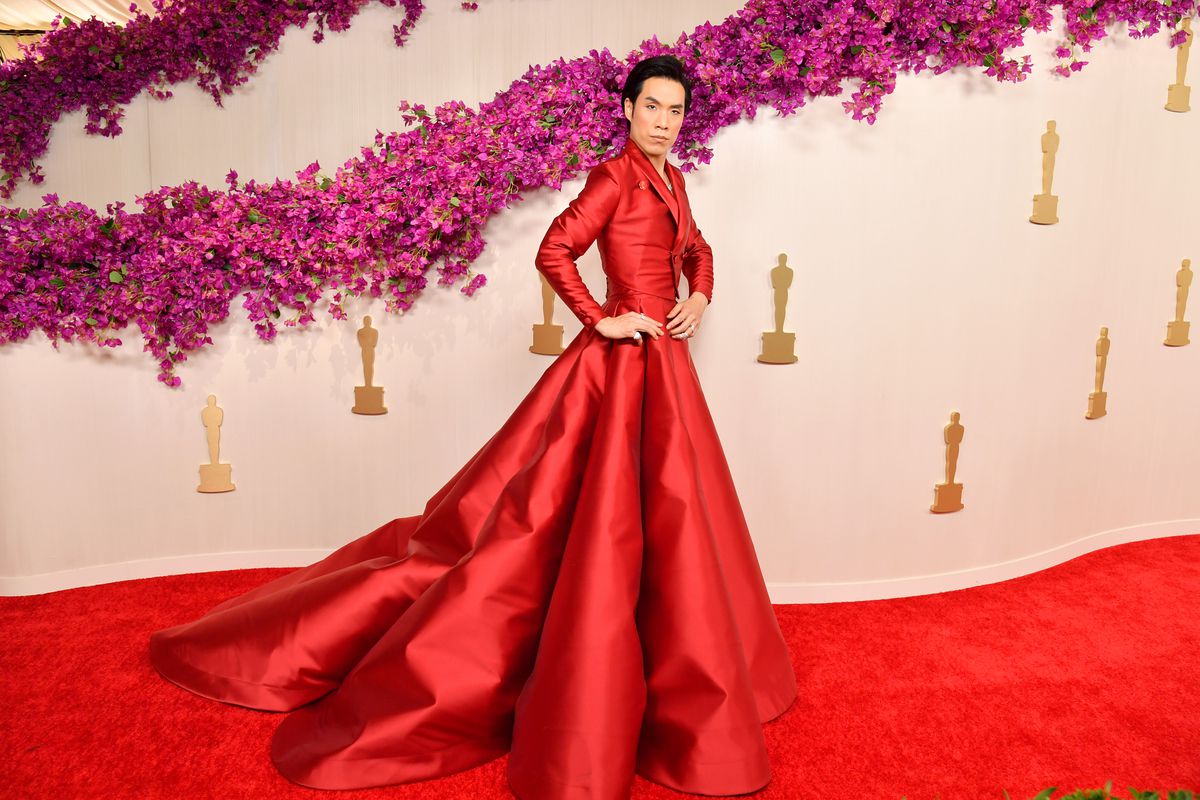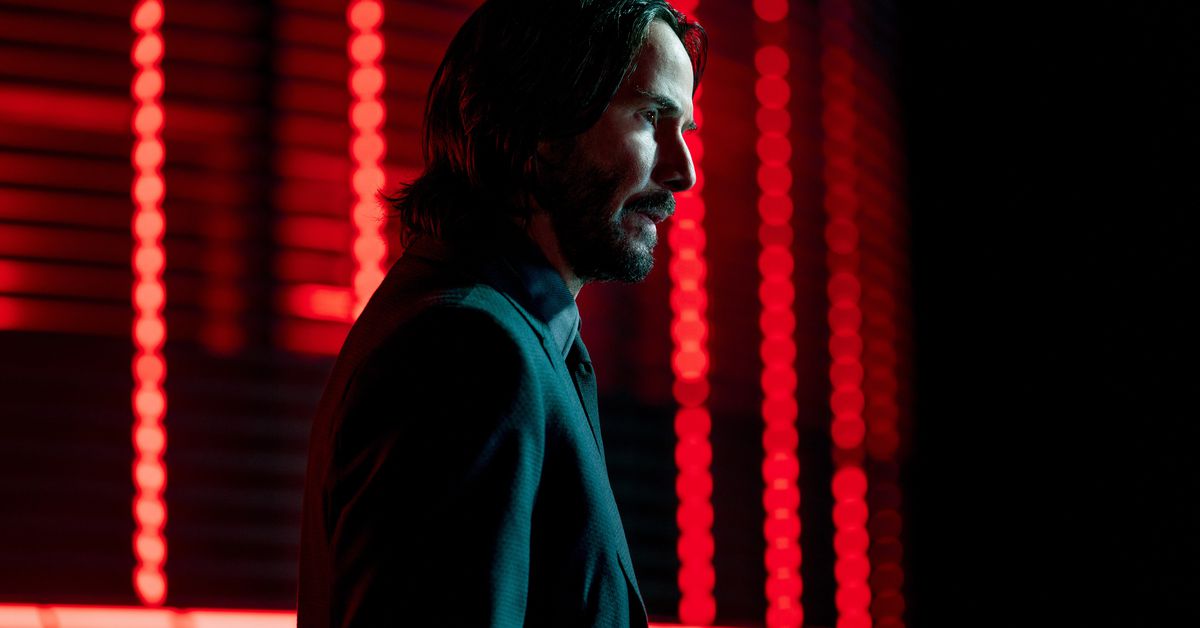There’s a small moment in Martin Scorsese’s Killers of the Flower Moon that fundamentally changed the way I viewed the entire story. The film, now streaming on Apple TV Plus, is a straightforward recounting of a painful time in Native American history — the infuriating true story of the 1920s Osage murders. But this one scene goes past simple history, and makes the movie something essential.
Full disclosure: I’m a Native American of the Ponca Tribe, and I had family members who worked on Killers of the Flower Moon as extras. We’ve long shared land, customs, and family with the Osage, largely due to our reservations being next to each other when both tribes were forced into Oklahoma. Our lands were so close that many Poncas found oil on their allotments as well, and that closeness meant a lot of intertribal marriages and relationships. My family actually still has some Osage headrights, but they’re so diluted, they bring in about $80 a year.
Killers of the Flower Moon tells the true tale of the Osage murders in Oklahoma in the early 1900s. On top of having to fight back against the systemic racism keeping them from their own money, the Osage had to contend with a judicial system that largely didn’t care if they were killed. One character in the movie, John Ramsey (Ty Mitchell), even mentions that he considers killing Indians different from killing “people.” Another character accurately notes that at the time, it’d be easier to convict someone of killing a dog than killing an Indian. In the eyes of powerful white society, Natives were subhuman — obstacles to be disposed of in the hunt for profit and power.
:no_upscale()/cdn.vox-cdn.com/uploads/chorus_asset/file/25222143/MCDKIOF_PA033.jpg)
It’s difficult to pinpoint an exact number of Osage victims in the Oklahoma killings, but the most recent estimation from current Osage Principal Chief Geoffrey Standing Bear is roughly 150. Rather than trying to highlight each victim, Scorsese and co-writer Eric Roth, working from David Grann’s bestselling nonfiction book, filter the tragedy through Mollie Burkhart (Lily Gladstone), an Osage woman whose husband, Ernest (Leonardo DiCaprio), was one of the murderers stalking the Osage.
After Mollie marries Ernest, members of her family begin dying, as Ernest, his uncle Bill “King” Hale (Robert De Niro), and others conspire to deprive them of their lucrative land headrights. In the latter half of the film, the only immediate family Mollie has left, aside from her own children, is her sister Rita. Until a fateful evening in 1923.
[Ed. note: Spoilers ahead for Killers of the Flower Moon.]
The real-life Rita Smith and her husband, Bill, were targeted in a deadly blast that destroyed their home as they slept. When the same event happens in the movie, Scorsese makes a point of showing Ernest surveying the damage, ostensibly to figure out what happened, even though he directly orchestrated the explosion. When he stumbles back to Mollie at their house, his grim expression is all the confirmation she needs: Her last remaining sibling is gone.
:no_upscale()/cdn.vox-cdn.com/uploads/chorus_asset/file/25222152/MCDKIOF_PA011.jpg)
There, at the bottom of the staircase in the basement, Mollie lets out a gut-wrenching wail. Her scream echoes through the basement, but its reverberations go far beyond those walls, and beyond even the moment itself. Her scream has haunted me since I watched the film. Her keening is more than grief — it’s an expression of rage and despair at the helplessness forced upon her by her tribe’s oppressors.
The history of the Osage murders is a terrible one. As a Native American — and as someone who’d already read Grann’s book — I expected the pain and anger showcased in the film. Yet nothing could have prepared me for Mollie’s emotional breakdown.
Mainstream media usually depicts Native Americans as uniformly stoic people — proud and unyielding, showing neither joy nor sorrow. Of course, as with many of the stereotypes in the media, we know that largely isn’t the case. A few tribes are known for their stoicism. My own falls more on the restrained side, choosing to let our music and community dances provide an outlet for our emotions. The film even mentions the Osage as people who “don’t talk much.” But that’s far from the norm.
It’s a tough mindset to shake, but after decades of this portrayal in movies and television, it’s what non-Native audiences have come to expect. It’s easier to watch these kinds of historical atrocities with a sense of detachment if you expect the victims to shoulder the burden quietly. Mollie’s heart-rending cry is something different. It forces the audiences to empathize with the raw emotion on display.
:no_upscale()/cdn.vox-cdn.com/uploads/chorus_asset/file/25222237/MCDKIOF_PA015.jpg)
Up to that point in the film, I watched the abuse and corruption unfold with simmering anger. After all, these events happened in the past. My fury, no matter how righteous, would be impotent. But Mollie’s scream jolted me. It forced me to view her pain as more than a historical fact.
Mollie’s outcry goes beyond the character and her moment of suffering. Her wailing gave me the greenlight to grieve as well. It was almost like getting permission to release the anger and heartache that had been building not only throughout the film, but during my first readthrough of the novel.
Gladstone’s delivery hit me like a freight train. Though I felt no particular closeness to Rita and Bill Smith, who largely remain on the sidelines of the film’s story, my eyes brimmed with tears at their loss. It was impossible for me to hold back a sob. It was an instantaneous, visceral reaction that took me completely unawares.
All Mollie’s anger and helplessness seethed into this singular moment, in a release that genuinely unlocked a core part of myself. My own rage at the injustice our people have faced — continue to face — was reflected in Mollie’s grief in this instant.
In the few decades I’ve been alive, I’ve seen how our role in history has continued to diminish. Even today, efforts are being made to downplay the actions of colonization, assuaging the guilt of those who still benefit. Our culture’s erasure isn’t a problem from the past, it’s an issue in the present. Between our own stories and records being destroyed, via genocide or forced assimilation, and the elders who remembered the old stories best dying out, it’s disheartening to consider all that’s been lost.
:no_upscale()/cdn.vox-cdn.com/uploads/chorus_asset/file/25222248/MCDKIOF_PA022.jpg)
The grief I felt watching Killers of the Flower Moon wasn’t merely for Mollie’s pain, but for all the things that allowed events to reach the point seen in Scorsese’s movie. As Mollie’s mother mentions earlier in the film, when she has her vision of the owl, she’s witnessing the death of the tribe, and we are as well. In many ways, it also feels like the death of the Native peoples. Imagine the Osage narrowly surviving genocide further east, only to come to Oklahoma and suffer death by inches at the hands of greedy men and a government who can’t be bothered to care until the body count is too high to ignore.
There is no shortage of tragic moments in the film, but this one stands above the rest, largely because it clearly works as the turning point in the story. Killers of the Flower Moon can be divided into two sections: before Mollie’s lamentation, and after. The murder of the Smiths marks the beginning of the end for “King” Hale and his cronies.
This moment makes it impossible to disconnect from the humans at the heart of the tragedy. It’s easy to view history with a detached lens, as something that happened long ago. Mollie’s anguish here makes the pain all too present, and impossible to ignore.
As uncomfortable as it is, that’s why I feel these types of movies, laden with historical suffering, are necessary, especially on such a big scale. History is littered with horrendous moments, and it’s all too easy to say “never forget” or “never again” about events whose impact has permeated our collective culture. But what about all the small and specific atrocities against minorities, the ones that were so effective, or so effectively covered up, they got no mainstream attention?
Much has been said over the years about films and media about minority groups seemingly focusing only on suffering — the phrase “trauma porn” was coined as a general descriptor for these stories. Even Killers of the Flower Moon has seen its share of outcry in this regard from notable Natives.
:no_upscale()/cdn.vox-cdn.com/uploads/chorus_asset/file/25222252/MCDKIOF_PA010.jpg)
These perspectives, especially coming from the people being represented, should never be discounted. It’s vastly important for our stories to be told through our people, and there’s so much more to us than the trauma we’ve endured over the centuries. But personally, I think there’s room for these historical horror stories as well.
Hopefully, as the years go on, we will see the doors open wider for underrepresented people, allowing for a wide array of stories hitting all the elements of our cultures. Then it won’t seem like all we get in terms of representation are the trauma-porn flicks. But that doesn’t mean they can’t serve a purpose now. HBO’s Watchmen put a spotlight on the Tulsa Race Massacre, and in its wake, prompted a flood of new documentaries, books, and general efforts to bring more awareness to those events. I went to school in Oklahoma for years, less than an hour from Tulsa, and the Tulsa Race Massacre wasn’t being taught at any level. Watchmen did more to educate me on it than the state’s school system ever did.
I personally know of many Natives who grew up on the reservation without any real knowledge of the Osage “Reign of Terror” until Grann’s book became a critically acclaimed bestseller. The publicity of a major motion picture (directed by Martin Scorsese, no less) has vastly expanded the number of people learning about — and reeling over — the Osage atrocity.
There’s a vast difference between showcasing such trauma purely for entertainment value versus getting a point across. In my lifetime, I’ve seen more than enough movies and shows that draw on the image of burned-out campsites with untethered teepees flapping in the wind. I couldn’t even escape the trope in Star Wars, thanks to The Book of Boba Fett. I don’t need to see us Natives slaughtered wholesale anymore as a byproduct of a larger story being told. Using those deaths to highlight real history feels more palatable.
As crucial as it is for white people to be confronted with the reality of their ancestors’ misdeeds — which they still benefit from — it’s vital we don’t forget about them as well. For me, Mollie’s outburst in the basement strikes the balance between emotionally engaging the audience for entertainment and hammering home the importance of not looking away. Her cry cannot be ignored or downplayed, and it forces us to view the story as real human heartbreak, beyond the pages of history.








